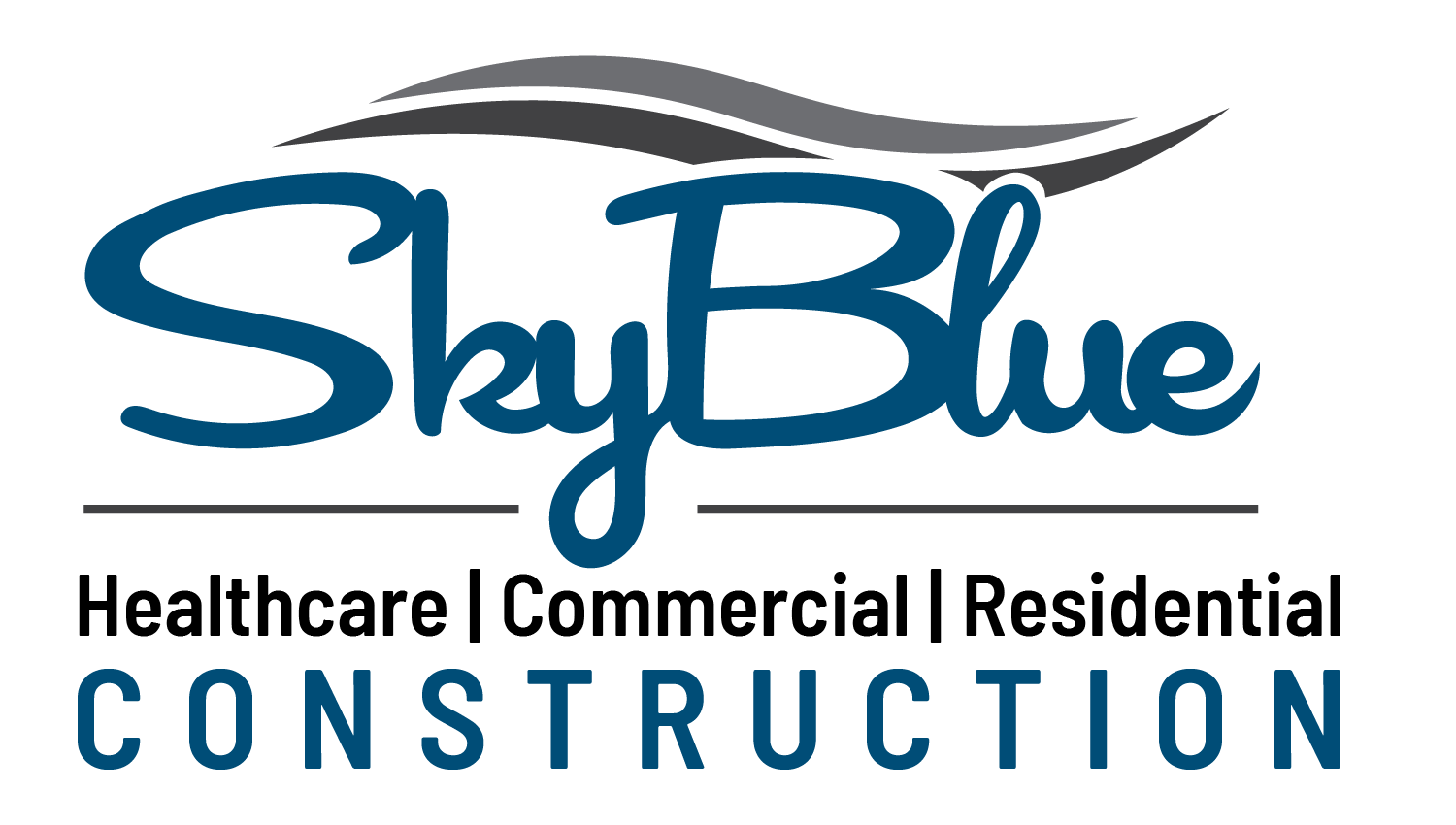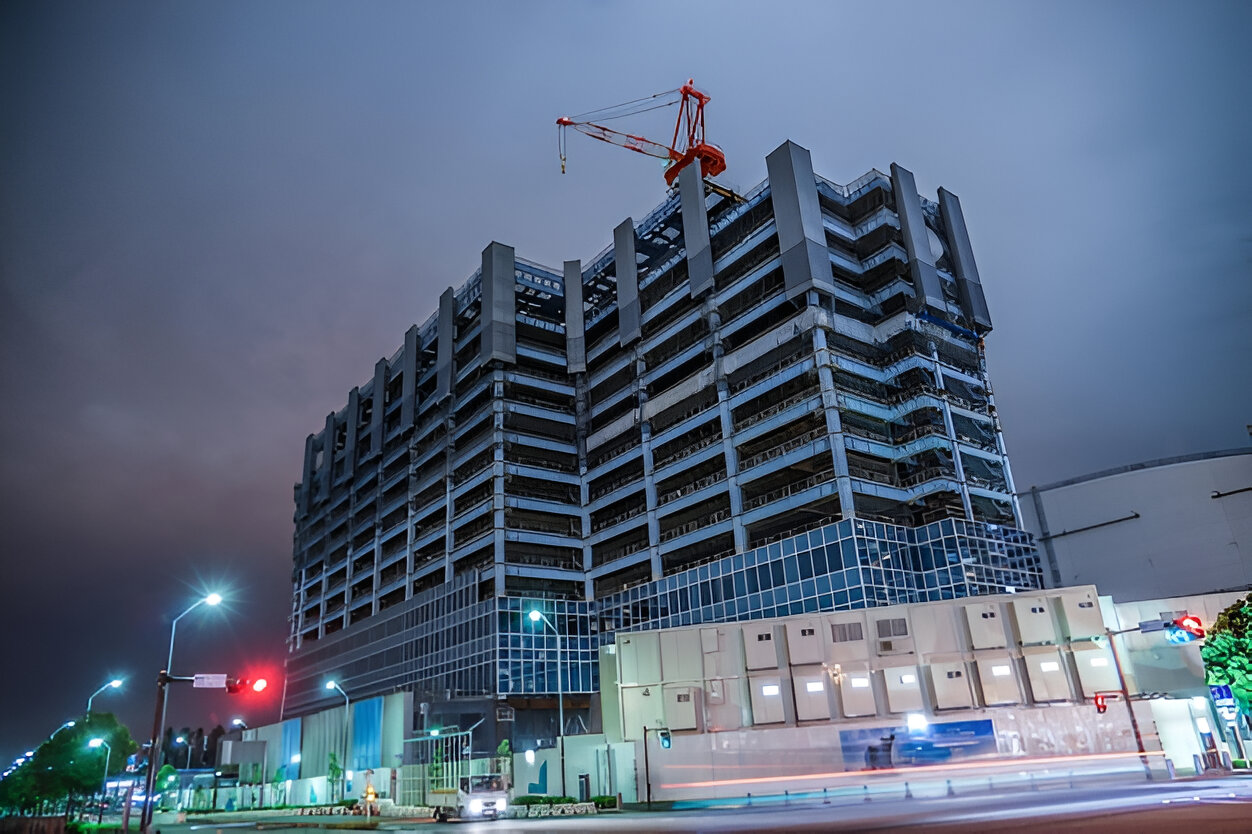Healthcare construction isn’t your everyday building project. Unlike offices or commercial spaces, hospitals and clinics are places where people come in during their most vulnerable moments, when they’re sick, hurt, or in need of care. That means every part of the building needs to be safe, clean, and fully functional, no matter what. From following strict codes to working around active hospital departments, there’s no room for error. At Sky Blue Construction, we’ve worked on many healthcare projects, and we’ve seen just how complex they can be. However, we’ve also seen how meaningful they are. In this blog, we’ll break down the unique challenges of healthcare construction in Calgary and how expert teams overcome them every day.
Healthcare Construction in Calgary Leaves No Room for Error
All buildings must follow rules and safety codes, but in healthcare construction, these rules are more detailed and stricter. Every part of a hospital, from the patient rooms to the electrical and air systems, has to meet special standards for safety, cleanliness, and easy access. These rules are there to protect the health and well-being of everyone in the building, including patients, staff, and visitors. To meet these strict requirements, healthcare builders don’t work alone. They team up with architects, hospital planners, safety experts, and government inspectors right from the start. The planning process is long and very detailed, with every part of the design carefully reviewed before any construction begins. Then, once building starts, inspections happen regularly to make sure nothing is missed or done incorrectly.
Construction Next to Critical Care
One of the hardest parts of working on a healthcare building is that the hospital usually stays open during construction. That means doctors and nurses continue treating patients and doing their jobs, even while construction happens just a few feet away. Everything must keep running smoothly. This demands detailed planning down to the exact hour. Crews often carry out construction in phases, setting up temporary hallways and barriers to guide people safely around the work. Builders also try to schedule loud or busy tasks during times when things are quieter in the hospital or when fewer people are around.
Cleanliness Isn’t Optional
In most construction projects, some dust and mess are normal. But in a hospital, even a tiny bit of dust can be dangerous. It can harm patients with weak immune systems or slow down recovery for someone who has just had surgery. That’s why keeping things clean is a top priority in healthcare construction. Work areas are sealed off with special plastic barriers that keep dust and germs from spreading. Air is filtered through strong HEPA systems, and negative air pressure is used to keep the dirty air inside the work zone.
Complicated Systems Behind the Walls
Most regular buildings only need the basics, such as standard plumbing, air conditioning, and electricity. However, healthcare construction in Calgary requires much more advanced systems. These include things like medical gas lines, backup power for emergencies, nurse call buttons, strong air ventilation, and special lighting. All of these systems must work perfectly at all times because they directly support patient care and safety. Builders plan carefully and pay close attention to detail when they put these systems in place. They install every wire, pipe, and switch exactly where it needs to go. Once they complete the installation, they test everything again and again before the facility can open.
Designing for What’s Next
One of the biggest differences between healthcare and other types of construction is how quickly things change. New machines, new treatment methods, and changing patient needs mean hospitals often have to update or expand their spaces sooner than expected. That’s why builders and architects design hospitals and healthcare buildings with the future in mind. They use flexible layouts, install movable walls, create modular rooms, and set up smart wiring, making it easier to change or upgrade spaces without tearing everything down.
Timelines and Pressure
Time is always important in construction, but in healthcare projects, delays can cause serious problems. If a new hospital department isn’t finished on time, it can hold back patient care or put extra pressure on doctors, nurses, and other staff. It can also affect how well the hospital runs overall. Even with all this time pressure, the work still can’t be rushed. Patient and staff safety always comes first, and the quality of the work must stay high. That’s why strong project management is so important from the very beginning to the end.
Building with Purpose
At the end of the day, healthcare construction isn’t only about putting up walls or installing machines. It’s about building spaces that help people heal, stay calm, and feel supported. These spaces need to be planned in a way that helps doctors, nurses, and medical teams do their jobs better and give patients the best care they can.
The work involved in healthcare construction in Calgary can be challenging and detailed, but the goal is always clear and simple. That is, to create safe, welcoming, and supportive spaces where people can recover, feel less stressed, and trust the care they receive. At Sky Blue Construction, we’re proud to be part of meaningful work like this. We know how important it is, and we take our role seriously.
Let’s build something that matters! Call us today.
FAQs
1. Why is healthcare construction more complicated than other types of building?
It requires strict compliance with health, safety, and accessibility codes, along with specialized systems and equipment that support patient care and treatment.
2. Can hospitals continue operating during renovation?
Yes. With careful planning and communication, construction can be done in active healthcare facilities with minimal disruption to staff and patients.
3. How do construction crews keep patients safe during the build?
They use sealed work zones, filtered airflow systems, off-hour scheduling, and rigorous cleanliness protocols to control dust, noise, and infection risks.
4. What makes healthcare infrastructure so different?
Hospitals need systems like medical gas, emergency power, advanced HVAC, and nurse call technology, all of which require precise installation and testing.
5. How do you future-proof a healthcare building?
By designing flexible layouts, leaving space for upgrades, and installing adaptable utilities that can support new equipment or different uses in the future.
People Also Ask
What is the biggest challenge in the construction industry?
One major challenge is staying on time and on budget while dealing with rising costs and unexpected delays.
What is the most challenging part of healthcare?
It’s often the pressure to deliver quick, high-quality care while managing stress, limited resources, and changing demands.
How does construction affect your health?
Exposure to dust, noise, and fumes during construction can lead to breathing issues or added stress, especially in sensitive environments like hospitals.
What are the challenges of the healthcare team?
Team members must work long hours, stay calm under pressure, and communicate clearly to give patients the best care possible.


